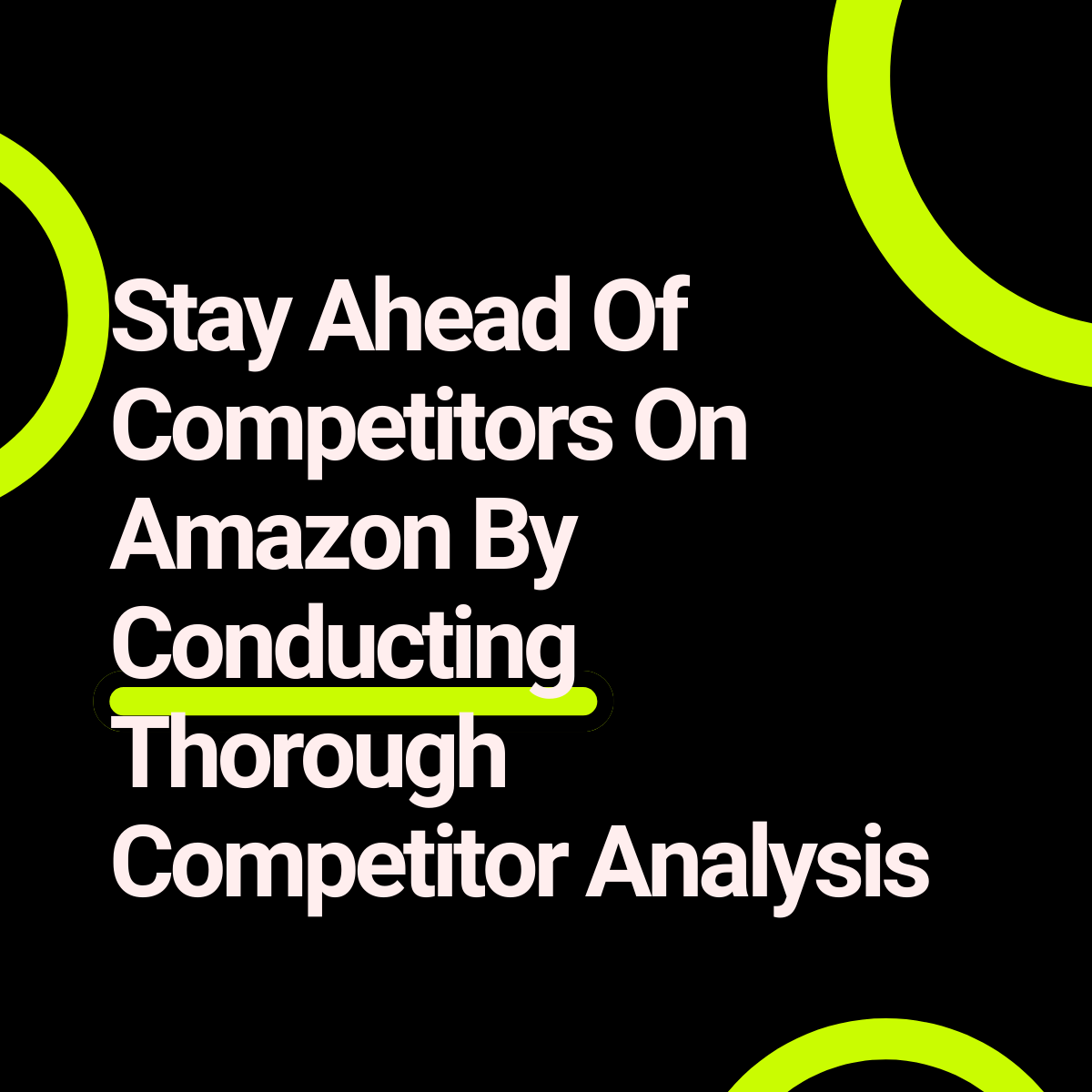In the fiercely competitive landscape of Amazon, staying ahead of the competition is paramount for sellers aiming to maximize their sales and grow their businesses. Effective competitor analysis serves as a strategic tool to gain valuable insights into market trends, customer preferences, and competitor strategies.
I. Introduction to Competitor Analysis on Amazon
Amazon’s marketplace presents immense opportunities for sellers, but with millions of products vying for attention, standing out can be challenging. Competitor analysis involves evaluating the strengths, weaknesses, and strategies of competing sellers to identify opportunities for improvement and differentiation.
A. Significance of Competitor Analysis
Competitor analysis offers several key benefits for Amazon sellers:
- Market Insights: Understand market trends, customer preferences, and demand dynamics.
- Identify Gaps: Identify gaps in the market and areas where competitors may be falling short.
- Strategic Positioning: Determine how to position products effectively to attract buyers.
- Optimize Strategies: Refine pricing, marketing, and product listing strategies based on competitor benchmarks.
II. Key Components of Competitor Analysis
Effective competitor analysis on Amazon involves a systematic approach encompassing various aspects of competitor activity and performance. Utilizing the MECE framework, we break down the key components of competitor analysis into mutually exclusive and collectively exhaustive categories.
A. Product Analysis
1. Product Assortment
- SKU Count: Evaluate the number of products offered by competitors within your niche.
- Product Variants: Analyse the range of product variants and sizes available.
2. Product Positioning
- Price Range: Compare pricing strategies across similar products.
- Unique Selling Propositions (USPs): Identify how competitors differentiate their products.
B. Performance Analysis
1. Sales Performance
- Sales Volume: Estimate sales volume based on product rankings and reviews.
- Revenue Estimates: Utilize tools to estimate competitor revenue based on sales data.
2. Customer Reviews
- Review Ratings: Assess the average rating and distribution of customer reviews.
- Review Sentiment: Analyse sentiment analysis to understand customer feedback.
C. Marketing Analysis
1. Advertising Strategies
- Sponsored Products: Identify competitors utilizing Amazon PPC advertising.
- Off-Amazon Advertising: Explore competitor advertising on external platforms.
2. Content Marketing
- Product Descriptions: Evaluate the quality and effectiveness of competitor product descriptions.
- Enhanced Content: Assess the use of A+ Content and Enhanced Brand Content.
III. Tools and Techniques for Competitor Analysis
A. Utilizing Amazon Tools
1. Amazon Brand Analytics
- Market Basket Analysis: Identify frequently co-purchased products to uncover cross-selling opportunities.
- Competitor Benchmarking: Compare your performance metrics with those of competitors.
2. Amazon Store Insights
- Traffic Analytics: Analyse traffic sources and visitor behaviour within competitor stores.
- Conversion Metrics: Evaluate conversion rates and factors influencing purchase decisions.
B. Third-Party Tools
1. Jungle Scout
- Product Tracker: Monitor competitor product metrics, including sales and pricing.
- Keyword Scout: Identify high-volume keywords driving traffic to competitor listings.
2. Helium 10
- Black Box: Conduct product research and identify competitor products within specific niches.
- X-ray: Analyse competitor listings for keyword optimization and product ranking factors.
IV. Implementing Competitive Strategies
Armed with insights from competitor analysis, sellers can develop and execute strategic initiatives to gain a competitive advantage on Amazon.
A. Product Differentiation
- Unique Value Proposition: Highlight unique features and benefits of your products.
- Bundle Offerings: Create product bundles to provide added value to customers.
B. Pricing Optimization
- Competitive Pricing: Adjust pricing strategies based on competitor benchmarks and market demand.
- Promotional Strategies: Offer discounts and promotions to attract price-conscious buyers.
C. Listing Optimization
- Keyword Optimization: Incorporate high-volume keywords into product titles, bullet points, and descriptions.
- Image Enhancement: Utilize high-quality images and lifestyle photos to enhance product visibility.
V. Monitoring and Adaptation
Competitor analysis is an ongoing process that requires regular monitoring and adaptation to changing market conditions.
A. Continuous Monitoring
- Sales and Performance Metrics: Track sales, reviews, and other performance metrics over time.
- Competitor Activity: Stay updated on competitor pricing changes, promotions, and new product launches.
B. Iterative Improvement
- Iterative Testing: Experiment with different strategies and tactics based on competitor insights.
- Feedback Loop: Solicit feedback from customers and incorporate learnings into future strategies.
VI. Conclusion
Competitor analysis is a fundamental aspect of succeeding as an Amazon seller. By thoroughly evaluating competitor activity and performance, sellers can uncover valuable insights to inform strategic decision-making and gain a competitive edge in the marketplace. By leveraging tools, techniques, and strategic initiatives outlined in this guide, sellers can position themselves for success and maximize their growth potential on Amazon. Stay proactive, stay informed, and stay ahead of the competition through effective competitor analysis.

